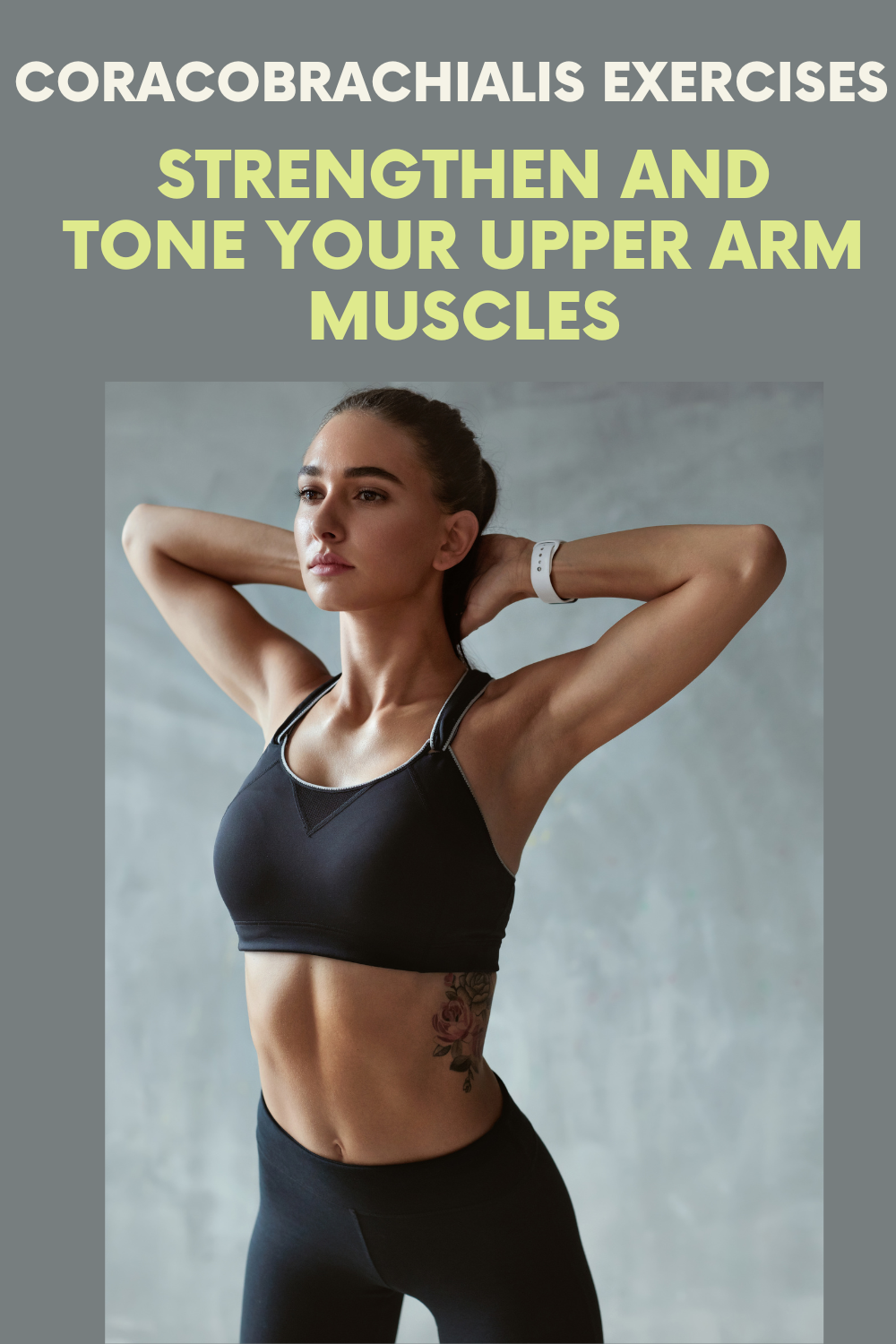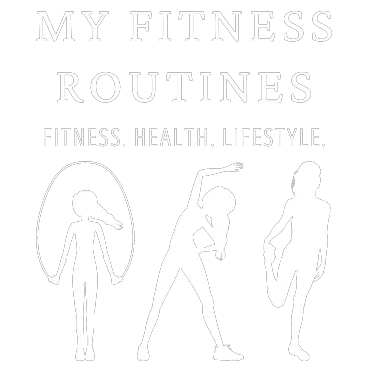Coracobrachialis Exercises: Strengthen and Tone Your Upper Arm Muscles
- kim
- 0
- Posted on
In this article, we will explore the top coracobrachialis exercises that can help you build bigger and stronger upper arms. From simple stretches to more advanced resistance band exercises, we will cover a variety of options to suit different fitness levels and preferences. Whether you are a beginner or a seasoned gym-goer, incorporating coracobrachialis exercises into your routine can help you achieve your fitness goals and improve your overall upper body strength.
When we think of upper arm exercises, we often focus on the biceps and triceps. However, the coracobrachialis is a small muscle in the shoulder that plays an important role in shoulder adduction and flexion. Strengthening this muscle can help improve overall upper arm and shoulder strength.
*This post includes my affiliate links
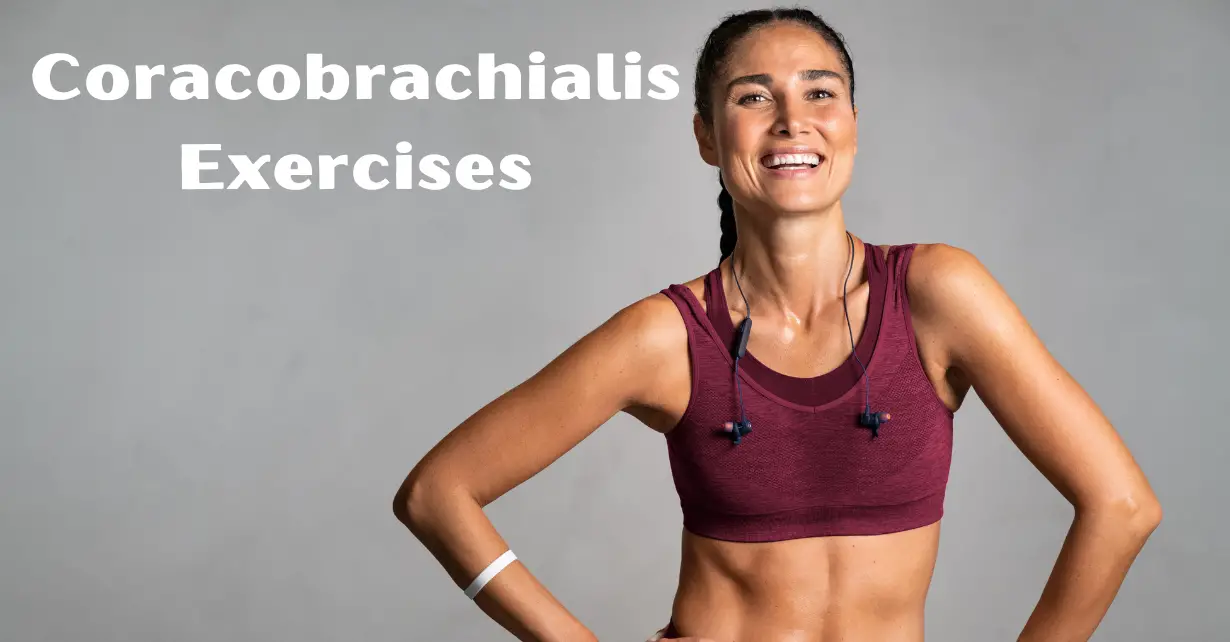
Anatomy of the Coracobrachialis Muscle
The coracobrachialis muscle is a slender muscle located in the anterior compartment of the upper arm. It originates from the coracoid process of the scapula and runs inferolateral towards the humerus. The muscle fibers insert onto the anteromedial surface of the humeral shaft, between the brachialis muscle and the medial head of the triceps.
The coracobrachialis muscle is innervated by the musculocutaneous nerve, which arises from the lateral cord of the brachial plexus. The blood supply to the muscle is provided by the brachial artery and its branches.
The coracobrachialis muscle acts to adduct and flex the arm at the shoulder joint. It also assists in stabilizing the humerus during overhead movements and contributes to the overall strength of the arm.
The coracobrachialis muscle is an important muscle for athletes and individuals who engage in activities that require upper body strength and stability. Strengthening exercises for the coracobrachialis muscle can help improve athletic performance and reduce the risk of injury.
Functions of the Coracobrachialis Muscle
In this section, we will discuss the functions of the coracobrachialis muscle.
Flexion and Adduction of the Arm
One of the primary functions of the coracobrachialis muscle is to produce flexion and adduction of the arm at the shoulder joint. Along with the other flexors of the arm, such as the biceps brachii and brachialis muscles, the coracobrachialis muscle is innervated by the musculocutaneous nerve.
This means that when we perform exercises that involve flexion and adduction of the arm, such as bicep curls or lat pulldowns, the coracobrachialis muscle is also activated.
Assists in Arm Internal Rotation
The coracobrachialis muscle also assists in arm internal rotation. This means that when we rotate our arm inward, the coracobrachialis muscle helps to initiate and control the movement.
This is an important function for many daily activities, such as reaching behind our backs or putting on a shirt.
Stabilizing the Shoulder Joint
The coracobrachialis muscle also plays a role in stabilizing the shoulder joint. Together with the deltoid and long head of the triceps brachii, the coracobrachialis muscle acts as a humeral head stabilizer.
This means that it helps to keep the humeral head in the correct position within the glenoid cavity of the scapula during arm movements.
All in all, the coracobrachialis muscle is an important muscle in the upper arm that plays a role in the flexion and adduction of the arm, assists in arm internal rotation, and stabilizes the shoulder joint. By including exercises that target this muscle in our workout routine, we can improve our overall upper body strength and function. In the next section, we will discuss some effective exercises for strengthening the coracobrachialis muscle.
Benefits Of Coracobrachialis Exercises
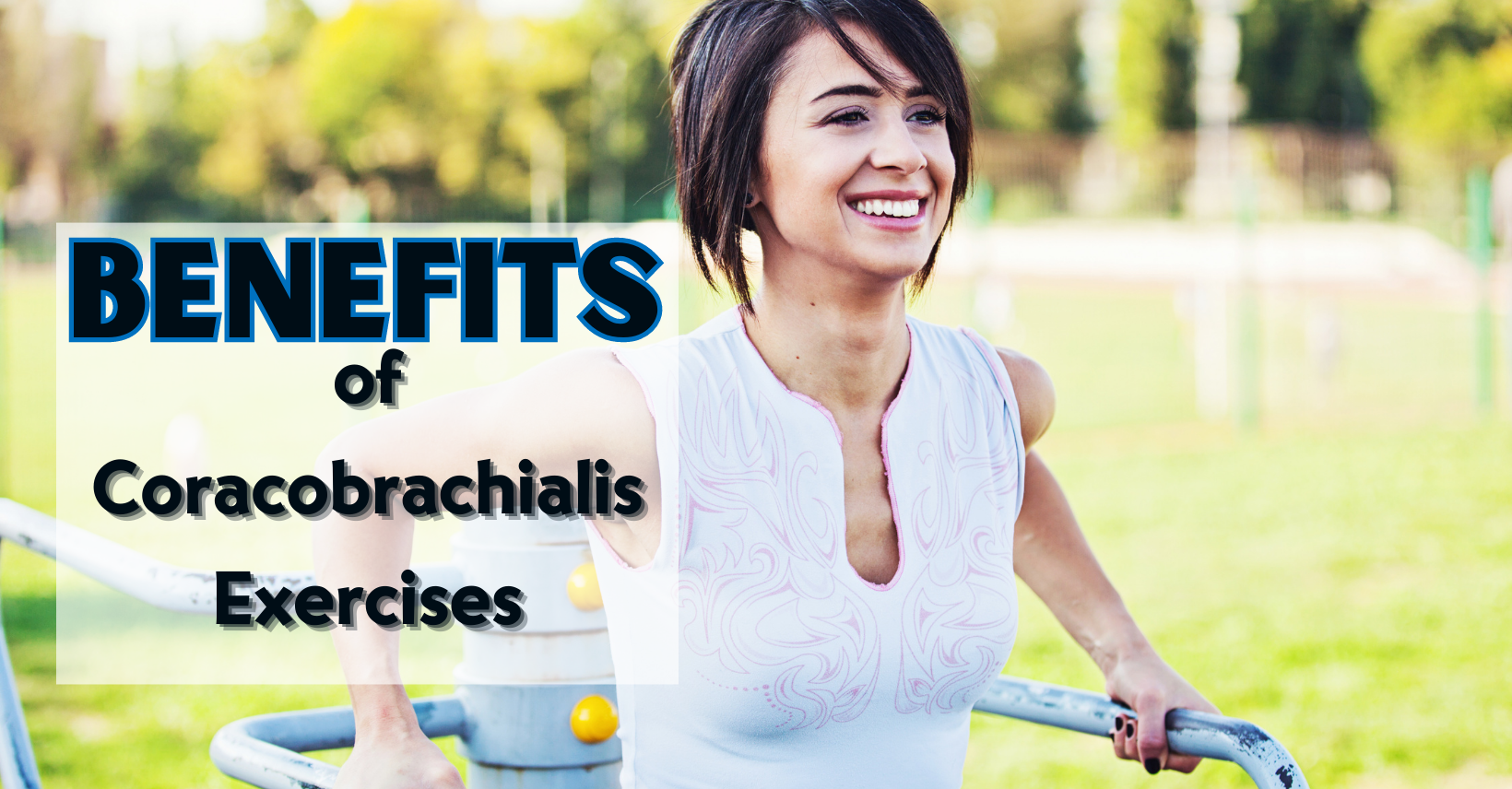
When it comes to upper body workouts, the coracobrachialis muscle is often overlooked. However, incorporating exercises that target this muscle can provide numerous benefits for our overall shoulder health, range of motion, posture, and injury prevention.
One of the primary benefits of coracobrachialis exercises is improved shoulder stability. By strengthening the coracobrachialis, the shoulder joint is better able to withstand the forces of the arms during exercises such as push-ups, pull-ups, overhead presses, and more. This can help reduce the risk of shoulder injuries and improve our overall performance.
In addition to improving shoulder stability, coracobrachialis exercises can also help improve our range of motion. This muscle is responsible for flexing the arm at the shoulder joint, which means that strengthening it can help us achieve a greater range of motion in our shoulder joint. This can be particularly beneficial for athletes who require a lot of shoulder mobility in their sport.
Another benefit of coracobrachialis exercises is improved posture. Having strong coracobrachialis muscles can help us stay in proper alignment and keep our shoulder joint from drifting forward into an overstretched position. This helps improve posture and encourages correct form when performing exercises that involve the shoulder.
Finally, coracobrachialis exercises can also help prevent injury. The coracobrachialis muscle is more prone to injury than most muscles as it works directly with more than one muscle. However, by strengthening this muscle, we can reduce the risk of injury and protect our shoulder joints.
Overall, incorporating coracobrachialis exercises into our upper body workouts can provide numerous benefits for our shoulder health, range of motion, posture, and injury prevention. By focusing on this muscle, we can improve our overall upper body strength and performance.
Coracobrachialis Stretching Exercises
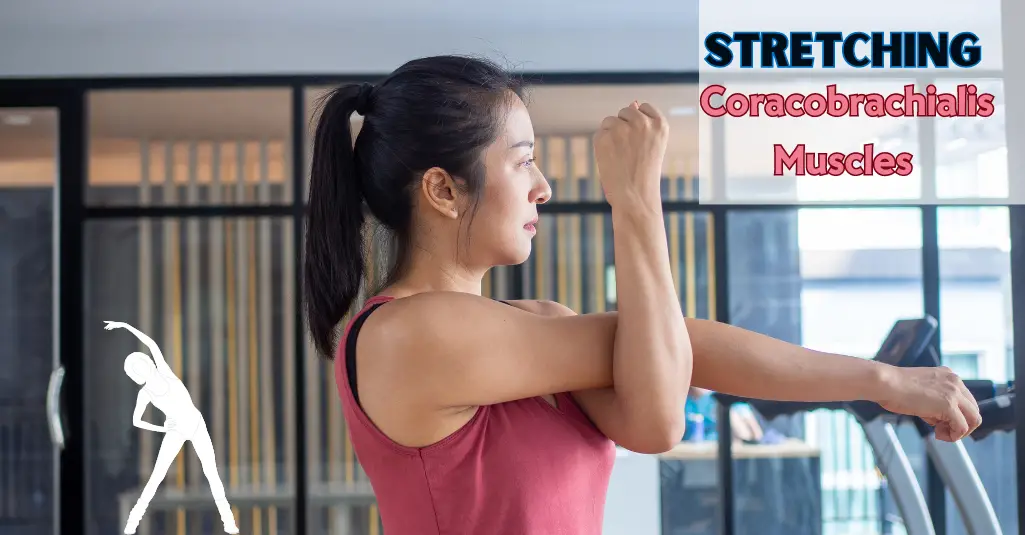
Stretching is an essential part of any fitness routine, and it is especially important when it comes to the coracobrachialis muscle. This muscle is located in the upper arm and is responsible for flexing and adducting the humerus. In this section, we will discuss the different types of coracobrachialis stretching exercises.
Static Stretches
Static stretches involve holding a position for a certain amount of time. These stretches are great for improving flexibility and range of motion. Here are a few static stretches that target the coracobrachialis:
- Doorway stretch: Stand in a doorway with your arms outstretched and your hands against the frame. Lean forward until you feel a stretch in your upper arms and chest. Hold for 30 seconds.
- Overhead triceps stretch: Raise one arm overhead and bend your elbow so that your hand is behind your head. Use your other hand to gently pull your elbow back until you feel a stretch in your triceps and upper arm. Hold for 30 seconds on each side.
- Cross-body shoulder stretch: Bring one arm across your chest and use your other arm to pull it closer to your body until you feel a stretch in your upper arm and shoulder. Hold for 30 seconds on each side.
Dynamic Stretches
Dynamic stretches involve moving through a range of motion to warm up the muscles and improve flexibility. Here are a few dynamic stretches that target the coracobrachialis:
- Arm circles: Stand with your arms outstretched and make small circles with your arms. Gradually increase the size of the circles until you feel a stretch in your upper arms and chest.
- Arm swings: Stand with your arms outstretched and swing them back and forth in front of your body. Gradually increase the range of motion until you feel a stretch in your upper arms and chest.
- Triceps pushdowns: Stand with your arms outstretched and your hands clasped together behind your back. Push your hands down towards your feet until you feel a stretch in your triceps and upper arm.
Incorporating these coracobrachialis stretching exercises into your fitness routine can help improve your flexibility and range of motion. Remember to always warm up before stretching and to hold each stretch for at least 30 seconds.
Coracobrachialis Strengthening Exercises
When it comes to building power and mass in the upper arms, the coracobrachialis muscle is often overlooked. However, incorporating coracobrachialis exercises into your routine can help you achieve well-rounded arm strength and definition.
Resistance Band Exercises
Resistance bands are a versatile and affordable tool for working out at home. Here are some coracobrachialis exercises you can do with resistance bands:
- Low Chest Fly: Anchor the resistance band to a sturdy object at chest height. Stand facing away from the anchor point and hold one end of the band in each hand. Extend your arms in front of you at chest height and slowly bring them out to the sides, keeping a slight bend in your elbows. Return to the starting position and repeat.
- Overhead Triceps Extension: Stand on the center of the resistance band with your feet shoulder-width apart. Hold one end of the band in each hand and lift your arms overhead, keeping your elbows close to your head. Slowly lower the band behind your head, bending your elbows. Return to the starting position and repeat.
Dumbbell Exercises
Dumbbells are a classic tool for building upper body strength. Here are some coracobrachialis exercises you can do with dumbbells:
- Dumbbell Bench Press: Lie on a bench with a dumbbell in each hand. Hold the dumbbells above your chest with your elbows bent at a 90-degree angle. Slowly lower the dumbbells to your chest, keeping your elbows tucked in. Push the dumbbells back up to the starting position and repeat.
- Hammer Curl: Stand with a dumbbell in each hand, palms facing in. Keeping your elbows close to your sides, curl the dumbbells up toward your shoulders. Lower the dumbbells back down and repeat.
Cable Machine Exercises
Cable machines provide constant resistance throughout the range of motion, making them great for building muscle. Here are some coracobrachialis exercises you can do with a cable machine:
- Cable Triceps Extension: Stand facing the cable machine with a rope attachment in both hands. Bring your hands up behind your head and extend your arms straight up, keeping your elbows close to your head. Lower the rope back down behind your head and repeat.
- Cable Crossover: Set the cable machine to chest height and stand facing away from it. Hold one handle in each hand and extend your arms out to the sides. Bring your arms in front of your chest, crossing the handles over each other. Return to the starting position and repeat.
Bodyweight Exercises
You don’t need equipment to work your coracobrachialis muscle. Here are some bodyweight exercises you can do:
- Chin-Ups: Hang from a pull-up bar with your palms facing toward you. Pull yourself up until your chin is above the bar, keeping your elbows close to your sides. Lower yourself back down and repeat.
- Dips: Sit on the edge of a bench or chair and place your hands on either side of your hips. Slide your hips off the bench and lower yourself down, bending your elbows. Push yourself back up to the starting position and repeat.
Common Injuries and Treatment
When it comes to the coracobrachialis muscle, there are several common injuries that can occur. In this section, we’ll take a closer look at some of these injuries and the recommended treatments.
Coracobrachialis Pain
Coracobrachialis pain is common among athletes and those who engage in repetitive overhead activities. This pain is typically felt in the front of the shoulder and can radiate down the arm.
To treat coracobrachialis pain, rest and ice are typically recommended. Physical therapy exercises can also be helpful in strengthening the muscle and improving flexibility.
Overuse Injuries
Overuse injuries are another common problem associated with the coracobrachialis muscle. These injuries occur when the muscle is subjected to repetitive stress, such as throwing a ball or lifting weights.
To treat overuse injuries, rest and ice are recommended. Physical therapy exercises can also be helpful in reducing pain and improving strength.
Ruptures and Tears
In some cases, the coracobrachialis muscle can rupture or tear. This is typically the result of a sudden, forceful movement.
Treatment for ruptures and tears typically involves surgery to repair the muscle. Physical therapy exercises may also be recommended to help restore strength and flexibility.
In summary, injuries to the coracobrachialis muscle can be painful and debilitating. However, with the right treatment, most people are able to make a full recovery and return to their normal activities. If you are experiencing any pain or discomfort in your shoulder or arm, it’s important to seek medical attention right away to ensure that you receive the proper diagnosis and treatment.
Palpation and Trigger Points
When it comes to identifying and treating the coracobrachialis muscle, palpation is a crucial first step. Palpation refers to the process of feeling the muscle with the hands to identify any abnormalities or trigger points. We can use palpation to identify the exact location of the coracobrachialis muscle, as well as any trigger points that may be causing pain or discomfort.
To palpate the coracobrachialis muscle, we can start by bringing our arm up and moving our hand almost into our armpit, looking at going between our biceps and triceps. The coracobrachialis tends to indent where it connects in the middle of the upper arm. Find that area and press down gently with your fingers. You should be able to feel the muscles contracting and relaxing as you apply pressure.
Trigger points are areas of muscle that are tender to the touch and can cause pain or discomfort. The coracobrachialis muscle can develop trigger points due to overuse, injury, or poor posture. To identify trigger points in the coracobrachialis muscle, we can use palpation techniques to feel for areas of tenderness or tension.
When palpating for trigger points, it’s important to use a firm but gentle touch. Apply pressure to the muscle with your fingers and hold for a few seconds. If you feel any areas of tenderness or tension, you may have found a trigger point. To release the trigger point, you can use a variety of techniques, including massage, stretching, and foam rolling.
Overall, palpation and trigger point release are essential tools for identifying and treating the coracobrachialis muscle. By using these techniques, we can better understand the muscle and address any issues that may be causing pain or discomfort.
Incorporating coracobrachialis exercises into your workout routine can have numerous benefits. By strengthening this muscle, you can improve your shoulder stability and better withstand the forces of various arm exercises such as push-ups, pull-ups, and overhead presses.
As we have learned, the coracobrachialis muscle plays an important role in flexing and adducting the humerus at the glenohumeral joint, as well as assisting in arm internal rotation. By incorporating exercises such as bench rows, chin-ups, and dips, you can effectively target and strengthen this muscle.
It is important to note that proper form and technique should always be prioritized to avoid injury and maximize results. Consider seeking guidance from a certified personal trainer or physical therapist to ensure the proper execution of coracobrachialis exercises.
Additionally, resources such as the National Academy of Sports Medicine and YouTube channels dedicated to fitness can provide valuable education and guidance on incorporating coracobrachialis exercises into your workout routine.
We encourage you to explore these resources and subscribe to channels that align with your fitness goals and interests. Incorporating coracobrachialis exercises into your workout routine can improve your overall upper arm strength and stability, leading to improved performance in a variety of exercises and activities.
Do you have anything to add to this article? If you do, please leave me a comment below! I would love to hear from you!
PIN IT
